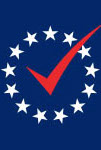Date Published: 2009-12-11
Author(s):
R. Michael Alvarez, California Institute of Technology
Abstract:
The 2000 presidential election was one of the closest elections in American history. A margin of about 550,000 votes separated Al Gore from George Bush, only about 0.52% of votes cast. And despite the fact that Gore received more of the popular vote than Bush, after a contentious situation in Florida and a U.S. Supreme Court decision, Bush was the recipient of more Electoral College votes than Gore (271 to 266) and Bush became president.
The controversy surrounding the 2000 presidential election, especially in the state of Florida where Bush ended up defeating Gore by 537 of the 5,963,110 votes cast, focused a great deal of attention on the administration of elections in that state, and on the technologies that voters used to cast their ballots. In that context, the Caltech/MIT Voting Technology Project (VTP) was formed. This academic research effort that was given the goal of determining how election technologies performed in the 2000 presidential election, where they did not perform well, and how to improve those technologies.
The VTP was then, and continues to be, a unique research project. It involves faculty, students and staff at two universities that are normally quite competitive (MIT and Caltech), which are located on opposite sides of the United States (MIT on the East Coast, and Caltech on the West Coast). Furthermore, the VTP has always involved the participation of a transdisciplinary research group: computer scientists, mechanical engineers, political scientists, human factors and usability experts, economics, and business and management scholars. The collaboration of scholars from so many academic disciplines has allowed VTP research to take a broad perspective on the many complex issues that arise in the study of election administration and technology. The VTP has also worked with scholars are other universities in throughout the world, and has developed strong relations with election officials on several continents.
However, when the VTP research team came together right after the November 2000 general elections in the United States to focus on the problems seen with election technology in that election (especially in Florida), we immediately grappled with a significant dilemma. There simply was not a great deal of previous research on election technologies; specifically, there was not an established scientific approach to studying the performance of election technologies.
